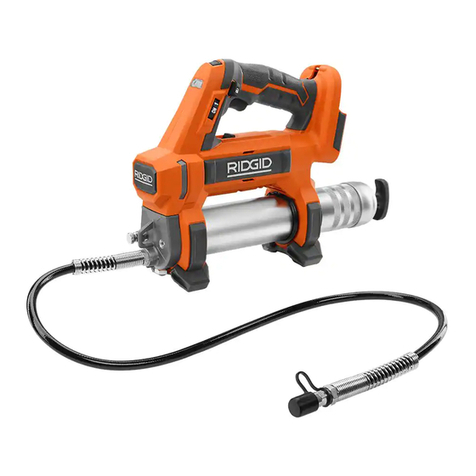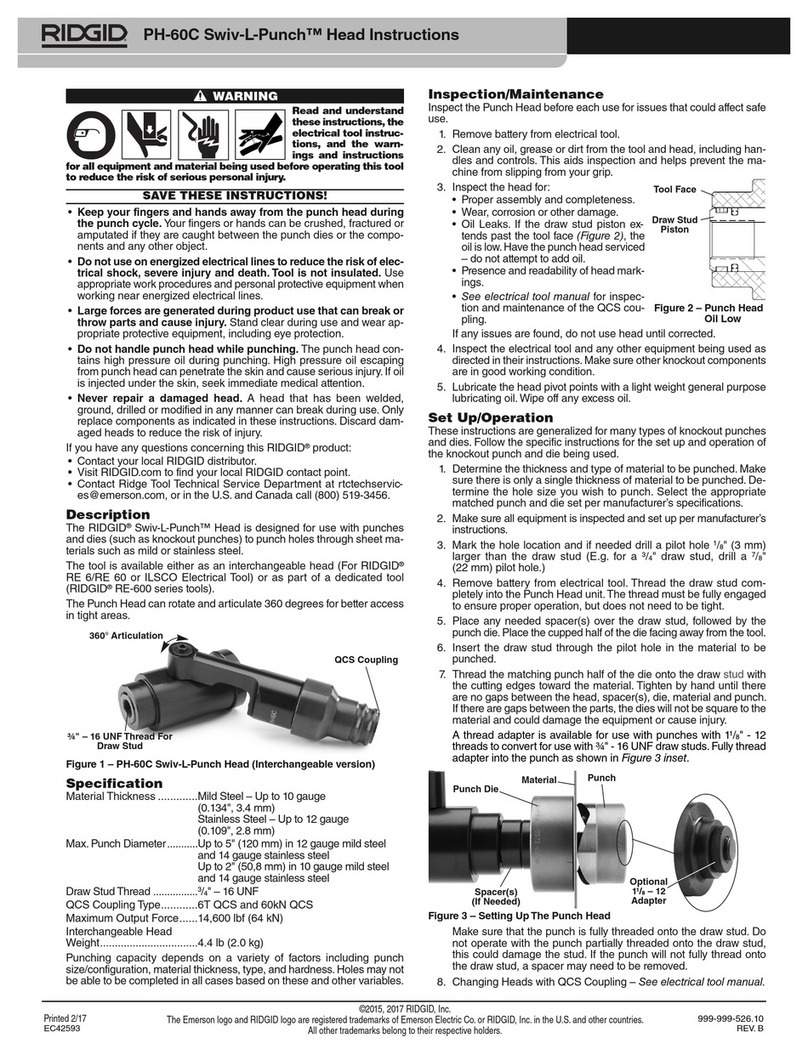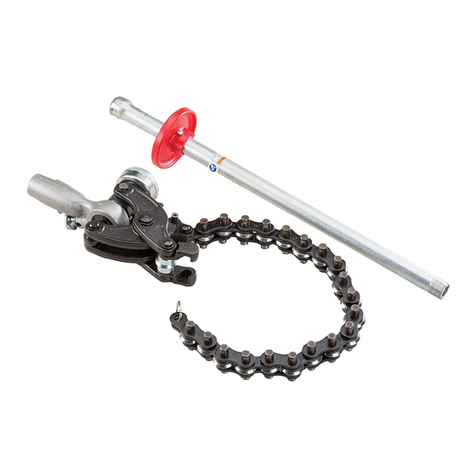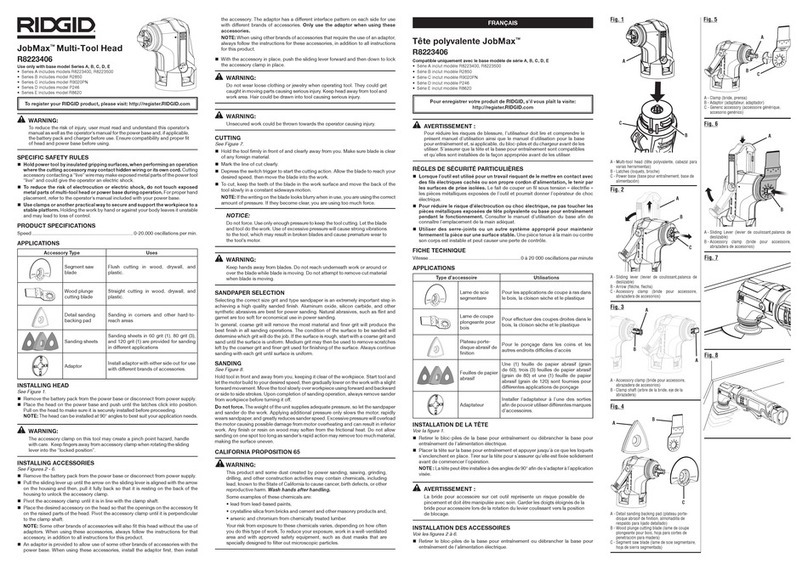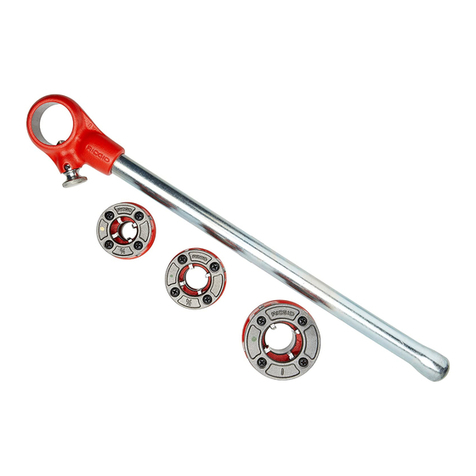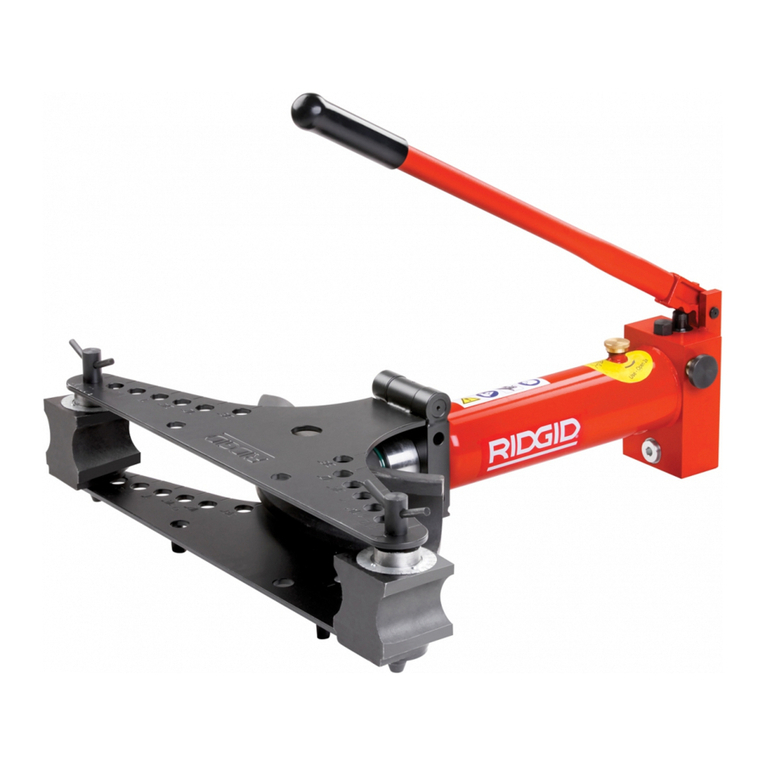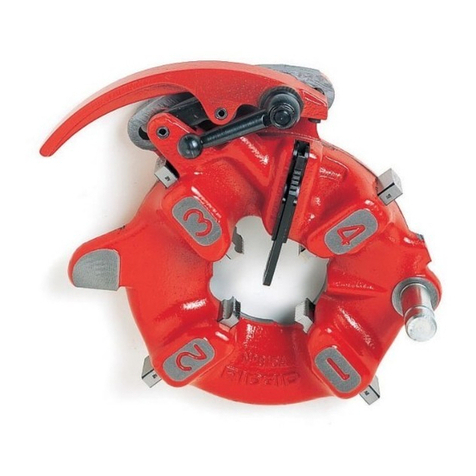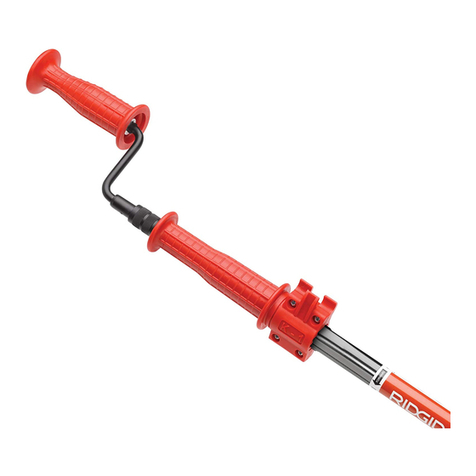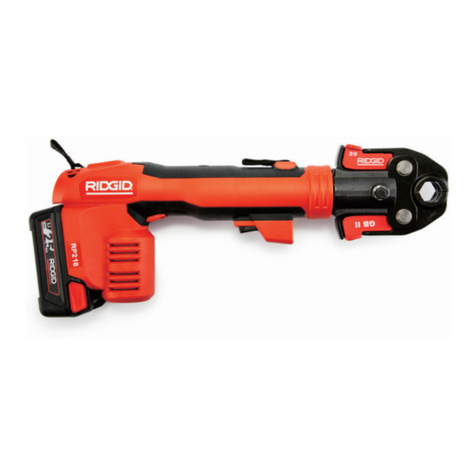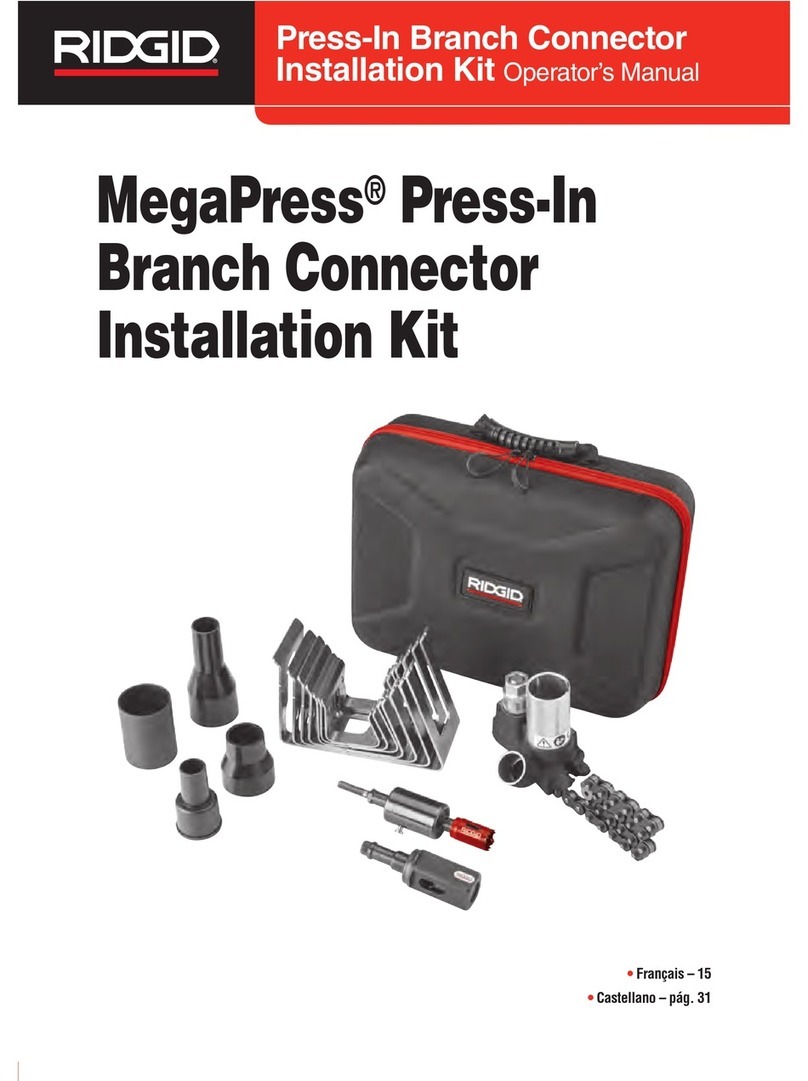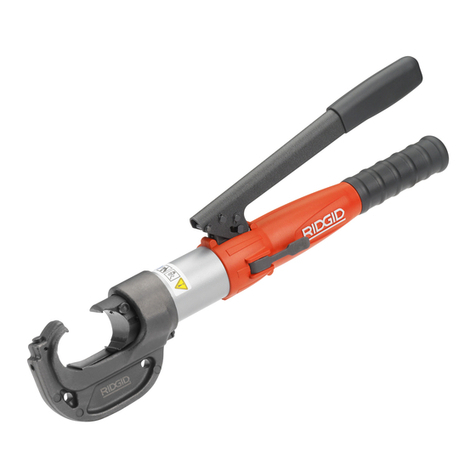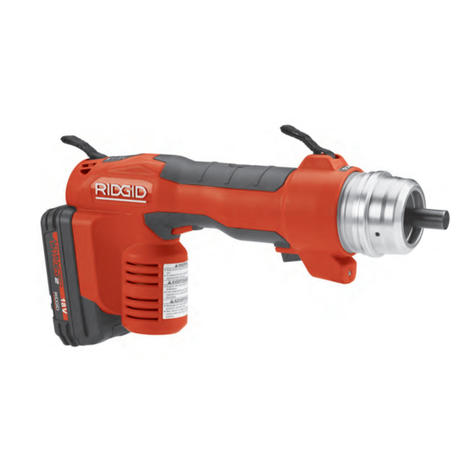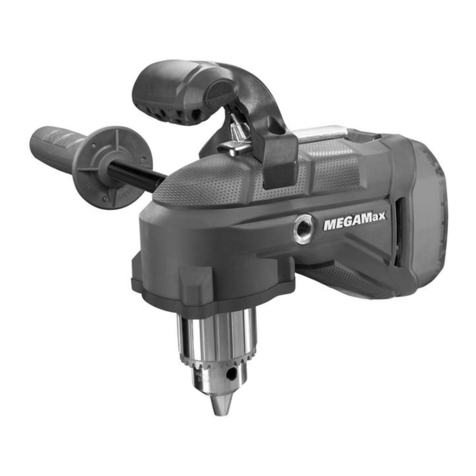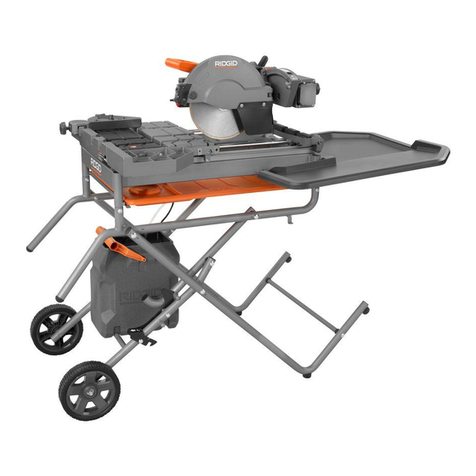Ridge Tool Company2
RT1000 Tapping Tool
General Safety Information
WARNING! READ AND UNDERSTAND ALL INSTRUCTIONS. FAILURE
TO FOLLOW ALL INSTRUCTIONS LISTED BELOW MAY RE-
SULT IN PROPERTY DAMAGE AND/OR SERIOUS
PERSONAL INJURY.
SAVE THESE INSTRUCTIONS!
Work Area Safety
•Keep your work area clean and well lit. Cluttered
work area invites accidents.
•Keep bystanders, children, and visitors away
while operating a tool. Distractions can result in
improperly using the tool.
Personal Safety
•Stay alert, watch what you are doing and use
common sense when operating a tapping tool. Do
not use tool while tired or under the influence
of drugs, alcohol, or medications. A moment of
inattention while operating tools may result in serious
personal injury.
•Dress properly. Do not wear loose clothing or
jewelry. Contain long hair. Keep your hair, cloth-
ing, and gloves away from moving parts. Loose
clothes, jewelry, or long hair can be caught in moving
parts.
•Do not overreach. Keep proper footing and bal-
ance at all times. Proper footing and balance enables
better control of the tool in unexpected situations.
•Use safety equipment. Always wear eye protec-
tion. Dust mask, non-skid safety shoes, hard hat,
or hearing protection must be used for appropriate
conditions.
Tool Use and Care
•Do not force tool. Use the correct tool for your ap-
plication. The correct tool will do the job better and
safer at the rate for which it is designed.
•Store idle tools out of the reach of children and
other untrained persons. Tools are dangerous in the
hands of untrained users.
•Maintain tools with care. Keep cutting tools sharp
and clean. Properly maintained tools with sharp cut-
ting edges are less likely to bind and are easier to
control.
•Check for misalignment or binding of moving
parts, breakage of parts, and any other condi-
tion that may affect the tools operation. If dam-
aged, have the tool serviced before using. Many
accidents are caused by poorly maintained tools.
•Use only accessories that are recommended for
your Tapping Tool. Accessories that may be suitable
for one tool may become hazardous when used on
another tool.
•Keep tool dry and clean; free from oil and grease.
Allows for better control of the tool.
Service
•Tool service must be performed only by qualified
repair personnel. Service or maintenance performed
by unqualified repair personnel could result in injury.
•When servicing a tool, use only identical re-
placement parts. Follow instructions in the
Maintenance Section of this manual. Use of unau-
thorized parts or failure to follow maintenance
instructions may create a risk of injury.
Specific Safety Information
Read this operator’s manual care-
fully before using the RT1000 Tapping Tool. Failure
to understand and follow the contents of this manual
may result in extensive property and environmental
damage and/or serious personal injury.
Call the Ridge Tool Company, Technical Service
Department at (800) 519-3458 if you have any ques-
tions.
Operator Training
Cutting into pipe containing liquids or gases under
pressure is potentially hazardous. Correct proce-
dures must be followed in the use of this equipment
to maintain a safe working environment and prevent
serious personal injury.
No person should use this tool who is not fully
trained in the proper operating procedure and who
is not fully aware of the potential hazards connected
with work on pipe containing liquids or gases under
pressure.
The purchaser of this equipment is responsible for
how this equipment is used and the training and
competence of the operators.
Should any difficulty arise at any time in the use of
this equipment, please contact Ridge Tool immedi-
ately!

